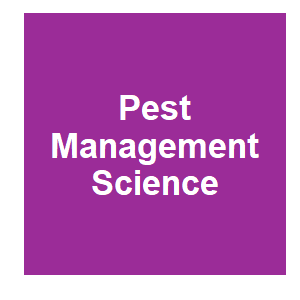Engineered expression of the invertebrate-specific scorpion toxin AaHIT reduces adult longevity and female fecundity in the diamondback moth Plutella xylostella

|
T. Harvey-Samuel, X. Xu, E. Lovett, T. Dafa'alla, A. Walker, V. C. Norman, R. Carter, J. Teal, L. Akilan, P. T. Leftwich, C. M. Reitmayer, H. A. Siddiqui and L. Alphey,
Pest Management Science,
2021.

BACKGROUND Previous genetic pest management (GPM) systems in diamondback moth (DBM) have relied on expressing lethal proteins (?effectors?) that are ?cell-autonomous?, that is, they do not leave the cell in which they are expressed. To increase the flexibility of future GPM systems in DBM, we aimed to assess the use of a non-cell-autonomous, invertebrate-specific, neurotoxic effector ? the scorpion toxin AaHIT. This AaHIT effector was designed to be secreted by expressing cells, potentially leading to effects on distant cells, specifically neuromuscular junctions. RESULTS Expression of AaHIT caused a ?shaking/quivering? phenotype that could be repressed by provision of an antidote (tetracycline): a phenotype consistent with the AaHIT mode-of-action. This effect was more pronounced when AaHIT expression was driven by the Hr5/ie1 promoter (82.44% of males, 65.14% of females) rather than Op/ie2 (57.35% of males, 48.39% of females). Contrary to expectations, the shaking phenotype and observed fitness costs were limited to adults in which they caused severe reductions in mean longevity (?81%) and median female fecundity (?93%). Quantitative polymerase chain reactions of AaHIT expression patterns and analysis of piggyBac-mediated transgene insertion sites suggest that restriction of the observed effects to the adult stages may be due to the influence of the local genomic environment on the tetO-AaHIT transgene. CONCLUSION We demonstrated the feasibility of using non-cell-autonomous effectors within a GPM context for the first time in Lepidoptera, one of the most economically damaging orders of insects. These findings provide a framework for extending this system to other pest Lepidoptera and to other secreted effectors. More related to this: Requirements for Driving Antipathogen Effector Genes into Populations of Disease Vectors by Homing Researchers Unveil Detailed Genome of Invasive Malaria Mosquito
|



